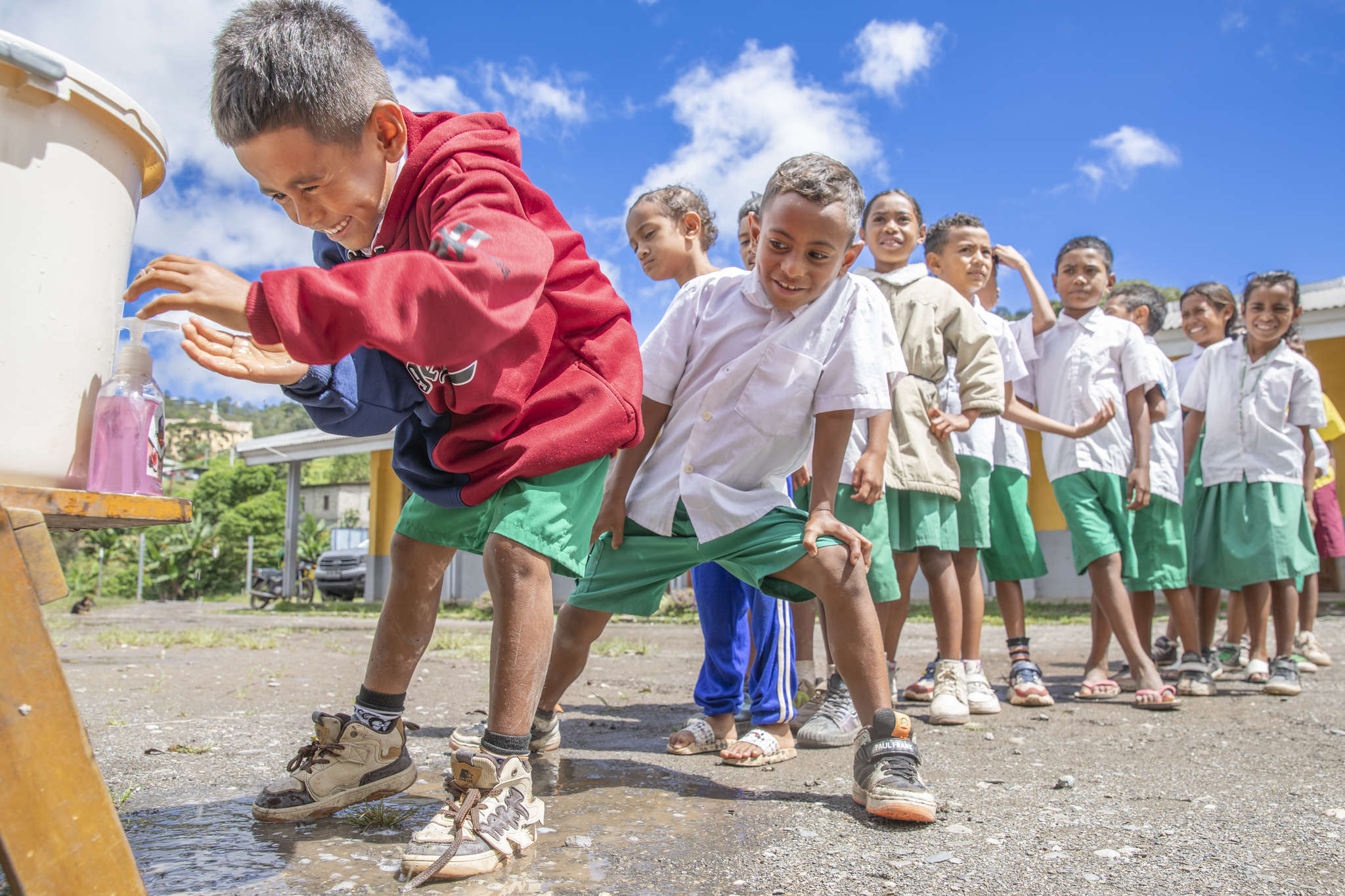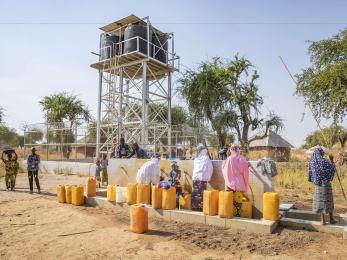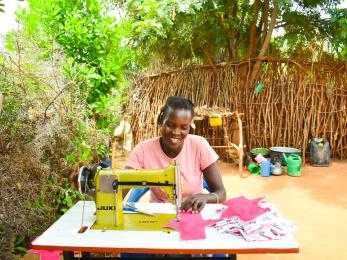How much water in a day?

It’s difficult to fathom the hardships that Justine endures when you’re immediately enveloped in her sweet, cheerful presence. The 25-year-old mother is easy to laugh and wears an almost-constant grin between her wide, round cheeks.
But she and her husband Antoine are struggling to keep their seven young children safe, healthy and educated in Goma, the large capital of North Kivu province in eastern Democratic Republic of Congo (DRC).
Like most families here, their biggest daily challenge has been finding enough water in this incredibly volatile place. Goma’s population has quadrupled with displaced people over the last 20 years — a two-decades-long conflict has uprooted more than four million people and killed five million more.
Today, more than 40 armed groups are active in the countryside around Goma, forcing people to flee from one place to another every single day. Displacement camps stud the outskirts of the already-crowded city that's built atop layers of lava rock.

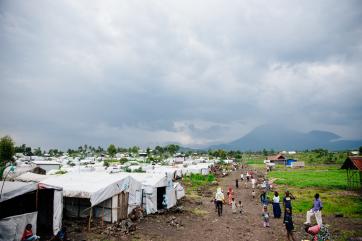
Yes, lava. As if the terrifying violence isn’t enough, the natural environment here is equally combustible. With Rwanda to the east, Goma is wedged between the shores of Lake Kivu to the south and the steaming Mt. Nyiragongo volcano to the north.
Africa’s most active volcano is visible from many parts of the city, a constant reminder of the huge 2002 eruption that buried much of Goma in lava and destroyed most of the aging infrastructure that brought water into the city. And all the volcanic activity has turned Lake Kivu, the only water source for Goma’s residents, into a hidden danger in itself.

Beneath the placid surface is a build-up of methane that makes it the largest of three “exploding” lakes in the world — an earthquake would turn the 1,000-square-foot body of water deadly. Even without such a catastrophe, the water is teeming with cholera, other waterborne bacteria and chemical waste that make children sick on a daily basis.
But still, girls and women like Justine walk for miles over jagged lava rock to fill their jerry cans here with dirty water so they can cook, clean and drink, since they’ve had no other affordable options. And they risk being attacked by roaming bandits on the long journey they often have to start in the early morning darkness.
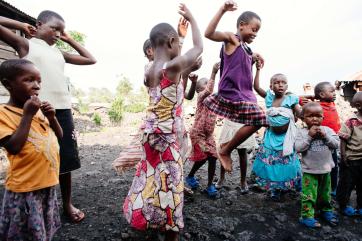

That’s why Mercy Corps has been working for the past five years breaking through lava to repair, improve and expand Goma’s water network so that life's most vital necessity is safe and available to everyone.
Today, an intricate system of pipes, pumps and reservoirs brings clean water to tap stands throughout the city — like this one across the street from Justine’s home.


Instead of walking hours to carry back just one 40-pound jerry can full of only five gallons of water — and repeating that backbreaking trek multiple times a day — Justine has to go only a few dozen yards to collect clean water for the small cost of 50 Congolese francs ($0.05 USD).
That’s up to ten times less than what people previously had to pay to private water vendors to get safe water — or risk bringing untreated lake water, and potential disease, home to quench their children’s thirst.

The Mercy Corps tap stand means there is one less thing for Justine and Antoine to worry about — a huge relief when they are still living on the edge. Even though they don’t tell a story, like so many people, of being attacked or fleeing a raid on their village, they’ve been displaced several times to find more affordable places to live after Antoine lost his job. Poverty is rampant and work is scarce for so many people in Goma.
Their current one-room wooden shack is crowded with only a tattered loveseat, table, and rock pile for a “stove”; one small bed sits behind the purple curtain, but it’s hard to see where nine people sleep without some spending the night on the floor.
"The house is very small for a family this big," Andre laments. "We are living in bad conditions. I am looking for any job so that I can help my family survive."
The upside is its proximity to a clean water source, which makes it easier for Justine to manage the family’s daily needs.
"When I was young, I had to search for water for many kilometers and spent all my time just to find water," she explains. "Now we are feeling very good... We have reduced the distance and time that we were spending searching for water. It is very important to us that it is closer to us."


But what is it really like without unlimited running water — sinks, showers, toilets — directly in their home? Justine estimates that they get about six jerry cans most days (sometimes less if there is not enough money for both water and food). That’s 31 gallons a day for a family of nine.
For comparison, consider that the average American individual uses 80-100 gallons each day. Each time you flush the toilet, you use about 2-3 gallons; every shower uses 2-5 gallons per minute. (Source: U.S. Geological Survey)
And again, those are figures for just one person. What about cooking? Drinking?
While living on just 31 gallons of water is hard to imagine for many individuals, it’s a larger — and steadier — amount of safe water than Justine has ever had before. It’s not always enough, but she is grateful and careful with how she uses the valuable supply.
"As we say, water is life. So there is nothing we can do without water."
Here's how Justine makes the most of the limited and precious resource every single day:
Justine wants an easier life for her children and does whatever she can to give them new opportunities. Right now they can only afford to send their oldest two children to school — Angel dreams of being a professional singer, and her younger brother Andre says he wants to be a priest — but the future for their younger siblings, like two-year-old twins Emmanuelle and Emmanuella, is a little more uncertain.
No matter what, Justine is grateful to be keeping her children healthy. With the arrival of clean water close to her home, she now has hope that things can change for the better in a place that is too often surrounded by suffering. In the next few years, the whole network will be built out to serve 1.55 million residents like Justine and her children in and around Goma. In the tap stand across the street, Justine sees the possibility of a future when water is not such a hardship and her children can focus on their dreams.







